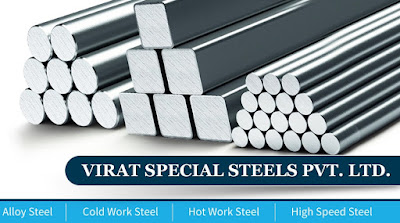Understanding The Characteristics And Uses Of Die Steel
Die steel is made with plain steel or alloy steel. It is used for the manufacturing of tools, which can be used for multiple purposes, including cutting, stamping, shearing, punching, chipping, etc. There are many different types of die steels that are present in the market. Depending on the way, the Die Steel is manufactured, the types of die steels include: - Hot work Steel : H-11, H13, DB6, P20, ( 2343, 2344, 2714, 2378) - Cold work steels : D2 , D3, O1 ( 2379 , 2080 ) - Shock resistant and low carbon tool steel - High speed die steel M2 , M35, T1 - Plastic mold tool steel P20 , P20 +Ni ( 2311, 2738 ) To increase the level of hardness of tool steels, various elements with alloying properties like chromium, vanadium, molybdenum, manganese and tungsten are added to the pla...


